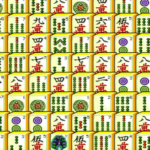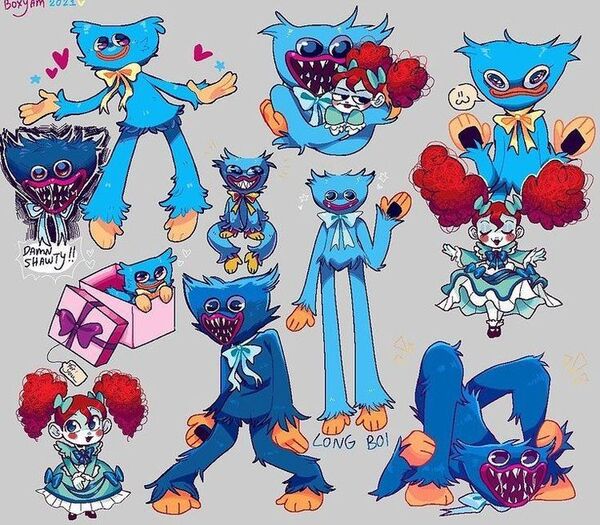99 Nights in the Forest [FURNITURE], a compelling
survival horror experience on the Roblox platform, plunges players into a perilous, pitch-black wilderness where every night brings escalating terror and the relentless pursuit of survival. Developed by Grandma's Favourite Games, this free-to-play title challenges up to four players to endure 99 nights against monstrous threats, manage vital resources, and uncover the mysteries lurking within the trees. Far from a casual stroll, this game demands strategic planning, teamwork, and quick reflexes, making it one of Roblox's most intense and engaging cooperative horror adventures.
Since its launch, the game has evolved, notably with the "[FURNITURE]" update, which adds a layer of base-building and customization, allowing players to fortify and personalize their camps. This fusion of classic survival mechanics—like resource gathering, crafting, and managing a crucial campfire—with a looming horror element and cooperative objectives creates a unique and highly addictive gameplay loop. Whether you're a veteran of Roblox survival games or new to the genre, "99 Nights in the Forest" offers a tense, rewarding, and often terrifying journey into the heart of darkness.
The Genesis of Fear: Surviving the Unseen
"99 Nights in the Forest" emerged as a prominent Roblox experience, capitalizing on the platform's robust framework for user-generated content to deliver a deep survival horror adventure. The game's core premise, surviving a set number of days against escalating threats, immediately resonates with players drawn to endurance challenges. Its initial success paved the way for continuous updates, each adding new mechanics, threats, and layers of complexity to the already intense gameplay.
The "[FURNITURE]" update marked a significant expansion, moving beyond mere survival to incorporate elements of creative base building. This addition allows players to not only fend off dangers but also establish a sense of permanence and personalization within the harsh environment, blending strategic defense with a comforting (albeit temporary) sense of home. This constant evolution is key to the game's lasting appeal and its ability to keep players returning for more nights in the haunted woods.
Core Gameplay: Survive, Craft, and Protect
At its core, "99 Nights in the Forest" is a
cooperative survival game where players must utilize their wits and teamwork to withstand the wilderness for 99 in-game nights. The primary objectives revolve around:
- Resource Management: Players must constantly gather wood, food, and other materials to maintain their campfire, which serves as a safe zone and a deterrent against certain creatures. Hunger is a persistent threat that must be managed by finding or cooking food.
- Crafting and Building: Essential for survival, crafting allows players to create tools, weapons, bandages, and other vital items. The "FURNITURE" update introduced new crafting recipes and the ability to construct and decorate a base at the campfire, offering both tactical advantages and a sense of progression. Players can repair a "Cultist Anvil" to craft rare items.
- Camp Defense: As nights progress, the forest becomes increasingly dangerous, with stronger monsters emerging. Players must defend their campfire and themselves from these threats, often involving strategic positioning and combat.
- Rescuing Children: A narrative objective involves rescuing four missing children—Dino Kid, Kraken Kid, Squid Kid, and Koala Kid—adding a purpose beyond mere survival.
The game's difficulty dynamically scales, ensuring that each passing night introduces new challenges and intensifies the sense of tension. This blend of resource management, base-building, and combat in a horror setting creates a compelling and often terrifying gameplay loop.
The Haunting Arena: The Forest and Its Secrets
The game takes place entirely within a sprawling, dark, and procedurally challenging forest environment. This setting is crucial to the horror atmosphere, leveraging limited visibility and ambient sounds to create a constant sense of unease.
- Dynamic Environment: The forest is not static. As nights pass, new areas might become accessible, new dangers emerge, and the difficulty escalates. Randomly spawning chests offer valuable resources, encouraging dangerous exploration.
- Monster Variety: Beyond the primary monstrous Deer, players encounter various other creatures and threats unique to the forest. Understanding their behaviors and weaknesses is key to survival.
- The Depths of the Forest: Hidden areas like the "Cultist Stronghold" exist, offering high-risk, high-reward opportunities for rare resources like Diamonds (a premium currency) used to unlock classes.
The environment itself is a character in the game, a constantly evolving threat that players must learn to navigate and exploit to their advantage. The "Furniture" update, while focused on camp building, implies that the immediate vicinity of the campfire becomes a more defensible and personalized hub within this dangerous world.
The Arsenal of Survival: Tools, Weapons, and Classes
Survival in "99 Nights in the Forest" relies on effective use of tools, weapons, and understanding the unique advantages provided by character classes.
- Basic Tools: Axes for chopping wood, pickaxes for mining, and other fundamental tools are essential for resource gathering.
- Crafted Weapons: Players can craft various weapons, from melee options like the Morning Star and Chainsaw to ranged weapons like a Revolver. The ability to craft bandages at the Cultist Anvil is vital for health recovery.
- Classes: The game features a "Classes" system, providing unique starting equipment and powerful passive buffs. Unlocked with Diamonds (an in-game currency earned by completing badges, surviving specific nights, or finding chests), these classes significantly influence gameplay strategy:
- Scavenger: Excellent for early game with increased sack space and bonuses for chest opening, useful throughout.
- Medic: Provides starting bandages and faster/more effective revives for allies, crucial for team play.
- Lumberjack: Boosts resource gathering (logs, saplings) and starts with a Good Axe, speeding up early game progression.
- Cook: Improves food crafting, making seasoned food and faster crockpot cooking.
- Hunter: Starts with bear traps, useful for defense.
- Brawler: A tanky melee-focused class with increased HP and melee damage, useful for late-game combat.
- Assassin: Offers sprint speed, critical strike chance, and throwing knives, a high-risk, high-reward option.
- Decorator: Benefits from the Furniture Trader, offering discounts and increased item availability for base building. Choosing the right class, especially in a team, can significantly impact a group's chances of survival, adding a layer of strategic depth before each run.
The Narrative of Despair: A Mysterious Threat
While gameplay-centric, "99 Nights in the Forest" weaves a subtle narrative of despair and mystery. The core premise of surviving against an enigmatic monstrous Deer and rescuing lost children hints at a larger, unsettling story. The discovery of ancient ruins, cultist strongholds, and the background lore of the monstrous threats suggests a deeper, more sinister history within the seemingly endless forest.
The game communicates its narrative through environmental cues, the escalating difficulty, and the very presence of its unique monsters. It relies on player imagination and emergent storytelling from their survival attempts to fill in the gaps, creating a personalized horror experience. The motivation to "survive 99 nights" becomes intertwined with the desire to understand the malevolent forces at play.
The Community and Updates: A Living Nightmare
"99 Nights in the Forest" benefits from an active community and consistent developer engagement. As a Roblox game, it fosters direct interaction among players, often leading to emergent cooperative strategies and shared survival tales.
- Regular Updates: The game receives frequent updates, such as the "[FURNITURE]" expansion, which introduce new mechanics, items, and challenges. These updates keep the experience fresh and provide reasons for players to return.
- Player-Driven Content (Indirect): While not directly user-generated beyond the initial game, the highly creative and strategic gameplay often leads to content creation by players, showcasing unique survival strategies, base designs, and funny moments.
- Community Forums/Discord: Like many popular Roblox games, it likely has active community channels where players share tips, coordinate runs, and discuss updates, enhancing the multiplayer experience.
This active development and community interaction are crucial for maintaining the game's longevity and ensuring a continuous stream of new terrifying nights for players to endure.
The Verdict: A Gripping Roblox Survival Experience
"99 Nights in the Forest [FURNITURE]" stands out as a compelling and genuinely unsettling survival horror experience within Roblox. Its blend of resource management, base-building, and intense combat against escalating threats creates an addictive loop that rewards teamwork and strategic thinking. The added layers of the "FURNITURE" update for base customization and the "Classes" system for varied gameplay enhance replayability and strategic depth. While its difficulty can be punishing, it is precisely this challenge that makes successfully surviving each night so rewarding. For players seeking a cooperative, tense, and evolving survival horror game on Roblox, "99 Nights in the Forest" delivers a memorable and often terrifying adventure. It is a testament to the versatility of the Roblox platform and the creativity of its developers.
![Roblox – 99 Nights in the Forest 🔦 [FURNITURE]](https://lootjudge.com/wp-content/uploads/2025/07/logo-8.webp)




























![Roblox – 99 Nights in the Forest 🔦 [FURNITURE]](https://lootjudge.com/wp-content/uploads/2025/07/logo-8-150x150.webp)



